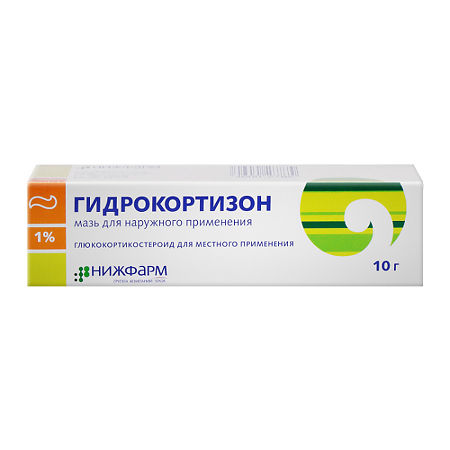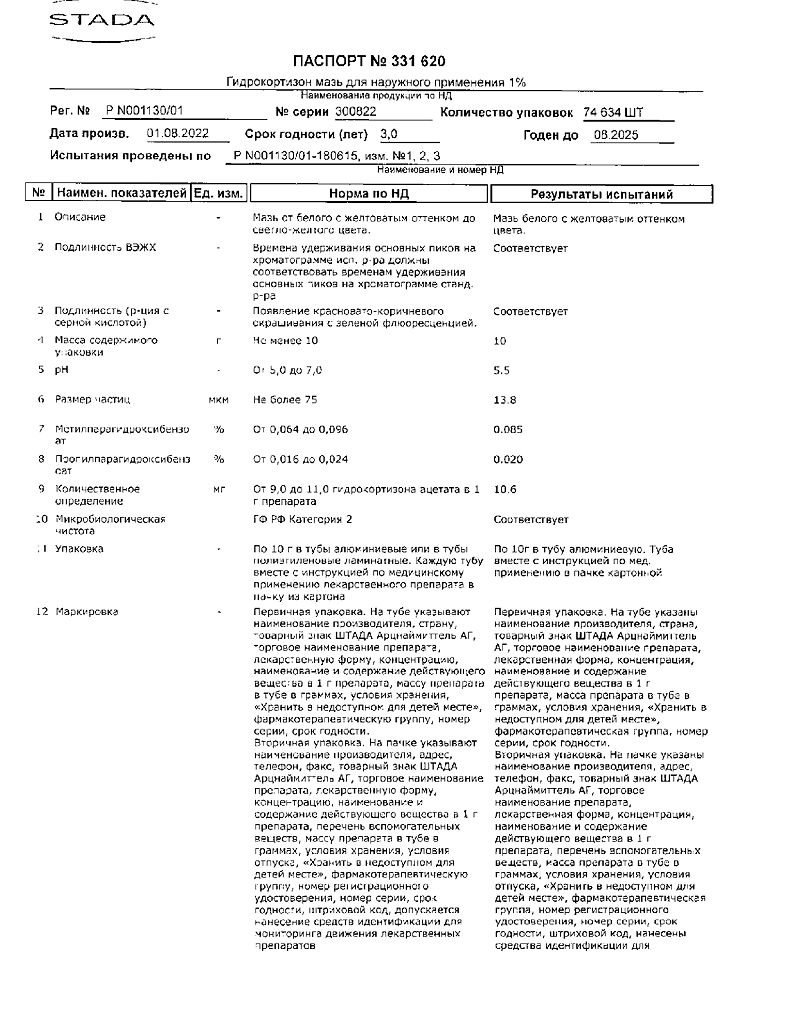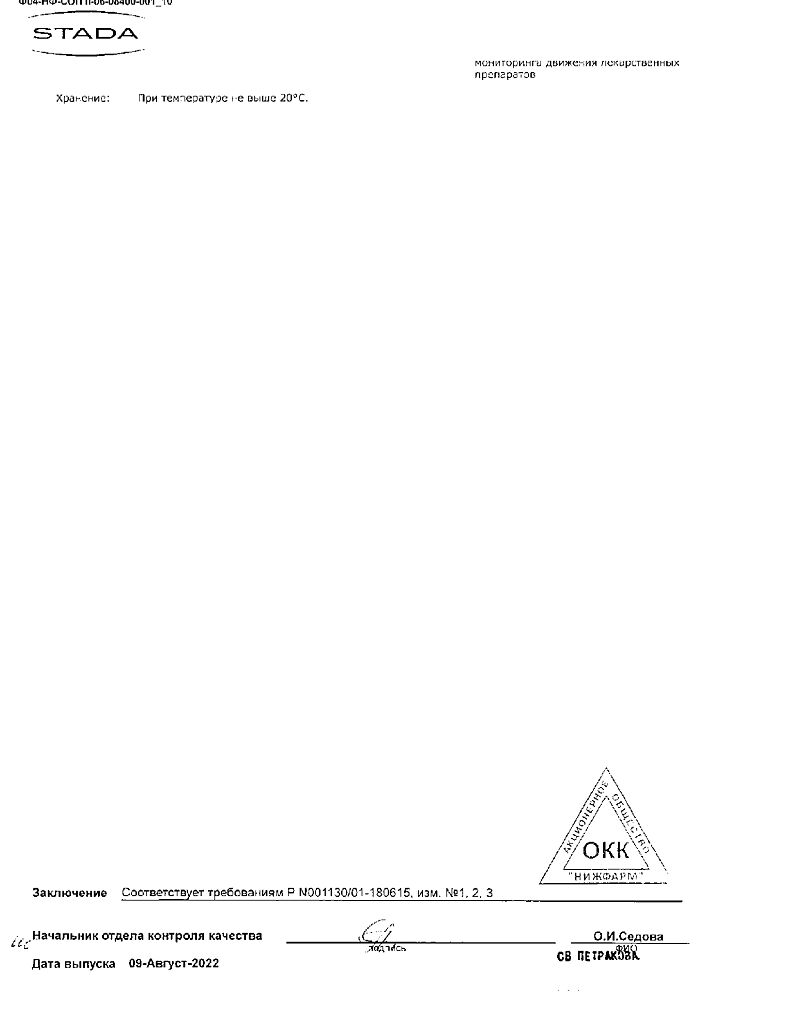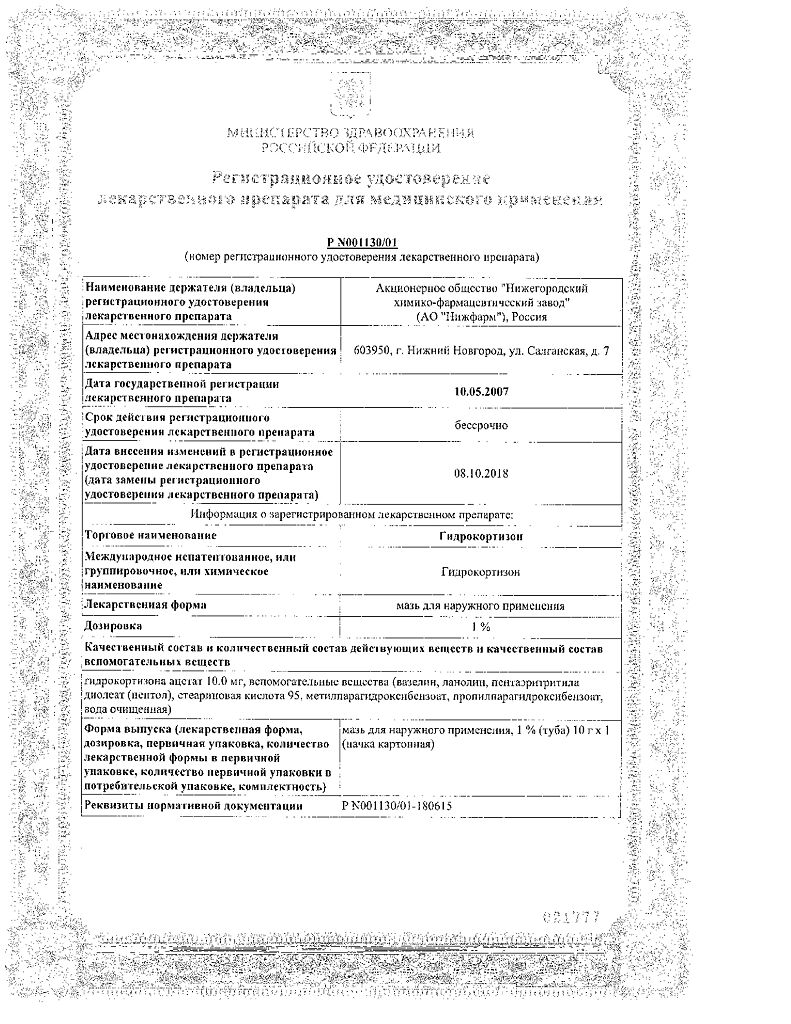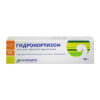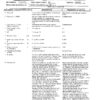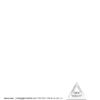No products in the cart.
Hydrocortisone, 1% ointment 10 g
€2.12 €1.93
Description
Combined drug, inhibits the development of inflammatory skin reactions, especially of allergic origin, complicated by bacterial infection, as a result of the combined action of the components that make up the drug.
Oxytetracycline is an antibiotic of tetracycline group with bacteriostatic effect.
Active against Gram-positive and Gram-negative bacteria, Rickettsia spp., Treponema spp., Chlamydia spp., Mycoplasma spp.
Hydrocortisone is a glucocorticosteroid that has anti-inflammatory, anti-allergic, antiexudative and antipruritic effects.
Inhibits phagocytosis, decreases synthesis of prostaglandins and leukotrienes by inhibiting phospholipase A2 activity and reducing arachidonic acid release from cell membrane phospholipids.
Inhibits release of interleukins and other cytokines causing inflammation; inhibits histamine release and local allergic reactions.
Reduces protein synthesis and collagen deposition in the skin, inhibits connective tissue development, weakens proliferative processes.
Indications
Indications
Active ingredient
Active ingredient
Composition
Composition
Composition per 1 g:
The active ingredient:
Hydrocortisone acetate – 10.0 mg;
Associates:
Vaseline,
Lanolin,
Pentaerythrityl dioleate (pentol),
Stearic acid 95,
Methyl parahydroxybenzoate,
Propyl parahydroxybenzoate,
Purified water.
How to take, the dosage
How to take, the dosage
Externally. Hydrocortisone ointment is applied in a thin layer on the affected areas of the skin 2 – 3 times a day.
The course of treatment depends on the nature of the disease and the effectiveness of therapy; as a rule, it is 6-14 days; if the disease persists, it can be extended up to 20 days.
In limited cases, occlusive dressings may be used to enhance the effect.
When using the ointment in children 2 years and older, the total duration of treatment should be limited to a maximum of two weeks and activities that lead to increased absorption of hydrocortisone (warming, fixation and occlusive dressings) should be excluded.
Interaction
Interaction
Barbiturates, antiepileptics and antihistamines reduce efficacy.
Paracetamol promotes hepatotoxicity.
Decreases the activity of salicylates, hypoglycemic agents, increases the activity of anticoagulants.
Heart glycosides and non-potassium-saving diuretics increase hypokalemia, anabolic steroids increase tissue hydrophilicity.
When combined with amphotericin B, development of dilated myocardial damage and heart failure is possible.
Special Instructions
Special Instructions
Avoid contact of the ointment with the eyes and mucous membranes.
If there is no improvement or worsening after 7 days of use, discontinue use and see a physician.
If symptoms persist for a few days after discontinuation, a physician should be consulted.
If prolonged treatment and/or application to large surfaces, it is recommended that a diet with sodium restriction and increased potassium content be prescribed; adequate amounts of protein should be introduced into the body.
The patient’s blood pressure, blood glucose, blood clotting, diuresis, body weight, and plasma cortisol concentration should be monitored.
In order to prevent infectious lesions the drug is recommended to be prescribed in combination with antibacterial and antifungal agents.
Impact on driving and operating machinery
When using the drug, caution should be exercised while driving vehicles and engaging in other potentially dangerous activities requiring increased concentration and quick psychomotor reactions.
Contraindications
Contraindications
With caution
Diabetes mellitus, tuberculosis (systemic lesion).
Side effects
Side effects
There may be phenomena of individual intolerance in the form of hyperemia, swelling and itching in the application areas of the ointment.
Long-term use may also cause secondary infectious skin lesions, atrophic changes in the skin, hypertrichosis.
In order to prevent infectious skin lesions the drug is recommended to be prescribed in combination with antibacterial and antifungal agents.
Long use of the ointment or use of an occlusive dressing, especially on large areas of lesions may cause hypercortisism as a manifestation of the resorptive action of hydrocortisone.
Overdose
Overdose
Acute overdose is unlikely; however, with excessive or prolonged use of the drug, chronic overdose is possible, accompanied by signs of hypercorticism: hyperglycemia, glucosuria, reversible suppression of adrenal cortical function, manifestation of Icenko-Cushing syndrome.
Treatment.
The appropriate symptomatic treatment is indicated.
In case of chronic toxic effects, gradual withdrawal of the drug is recommended.
Similarities
Similarities
Additional information
| Shelf life | 3 years. Do not use the drug after the expiration date. |
|---|---|
| Conditions of storage | At a temperature not exceeding 25°C. Store out of the reach of children. |
| Manufacturer | Nizhpharm AO, Russia |
| Medication form | topical ointment |
| Brand | Nizhpharm AO |
Related products
Buy Hydrocortisone, 1% ointment 10 g with delivery to USA, UK, Europe and over 120 other countries.

